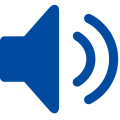Sign or Symptom
pain

pain [ peyn ]
Subclass of:
Neurologic Manifestations;
Esthesia
Definitions related to pain:
-
A feeling of distress, suffering, or agony, caused by stimulation of specialized nerve endings.ACC/AHA Clinical Data TerminologyAmerican College of Cardiology and American Heart Association , 2020
-
An unpleasant sensation associated with real or perceived physical or mental trauma.NICHD Pediatric TerminologyU.S. National Cancer Institute, 2021
-
An unpleasant sensation induced by noxious stimuli which are detected by NERVE ENDINGS of NOCICEPTIVE NEURONS.NLM Medical Subject HeadingsU.S. National Library of Medicine, 2021
-
An unpleasant sensory and emotional experience associated with actual or potential tissue damage, or described in terms of such damage.Human Phenotype Ontology (HPO)The Human Phenotype Ontology Project, 2021
-
Normal, predicted unpleasant feeling or physiological response to an adverse chemical, thermal or mechanical stimulus resulting from the stimulation of pain receptors at the site of tissue damage.Perioperative Nursing Data Set (PNDS)AORN, 2011
-
Pain is a signal in your nervous system that something may be wrong. It is an unpleasant feeling, such as a prick, tingle, sting, burn, or ache. Pain may be sharp or dull. It may come and go, or it may be constant. You may feel pain in one area of your body, such as your back, abdomen, chest, pelvis, or you may feel pain all over. Pain can be helpful in diagnosing a problem. If you never felt pain, you might seriously hurt yourself without knowing it, or you might not realize you have a medical problem that needs treatment. There are two types of pain: acute and chronic. Acute pain usually comes on suddenly, because of a disease, injury, or inflammation. It can often be diagnosed and treated. It usually goes away, though sometimes it can turn into chronic pain. Chronic pain lasts for a long time, and can cause severe problems. Pain is not always curable, but there are many ways to treat it. Treatment depends on the cause and type of pain. There are drug treatments, including pain relievers. There are also non-drug treatments, such as acupuncture, physical therapy, and sometimes surgery. NIH: National Institute of Neurological Disorders and StrokeMedlinePlusU.S. National Library of Medicine, 2021
-
The sensation of discomfort, distress, or agony, resulting from the stimulation of specialized nerve endings.NCI ThesaurusU.S. National Cancer Institute, 2021
-
Unpleasant sensation induced by noxious stimuli and generally received by specialized nerve endings.CRISP ThesaurusNational Institutes of Health, 2006
-
Unpleasant sensory and emotional experience associated with actual or potential tissue damage.The Omaha SystemOmaha Systems, 2005
-
(painful) Causing physical or psychological misery, pain or distress.NCI ThesaurusU.S. National Cancer Institute, 2021
-
A disorder characterized by the sensation of marked discomfort, distress or agony.Common Terminology Criteria for Adverse EventsU.S. National Institutes of Health, 2021
-
Pain is the most common reason patients seek medical care. Pain has sensory and emotional components and is often classified as acute or chronic. Acute pain is frequently associated with anxiety and hyperactivity of the sympathetic nervous system (eg, tachycardia, increased respiratory rate and BP, diaphoresis, dilated pupils). Chronic...Merck & Co., Inc., 2020
-
Pain, a complex experience consisting of a physiological and a psychological response to a noxious stimulus. Pain is a warning mechanism that protects an organism by influencing it to withdraw from harmful stimuli; it is primarily associated with injury or the threat of injury. Pain is subjective...Encyclopedia Britannica, Inc., 2020
Return to OpenMD Medical Dictionary
> P
This content should not be used in place of medically-reviewed decision support reference material or professional medical advice. Some terms may have alternate or updated definitions not reflected in this set. The definitions on this page should not be considered complete or up to date.